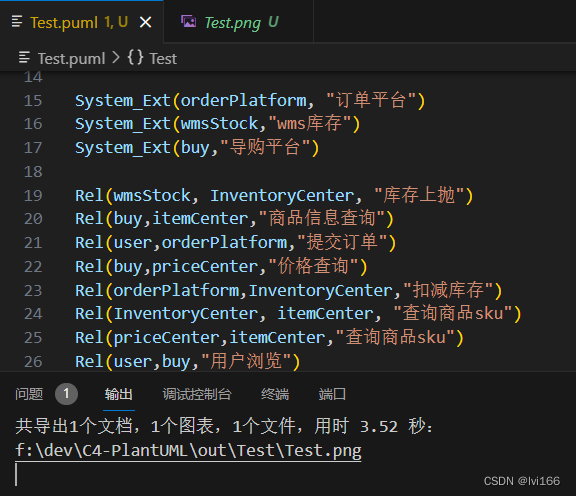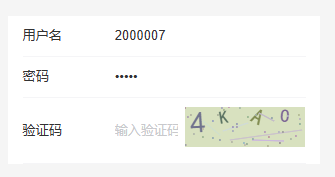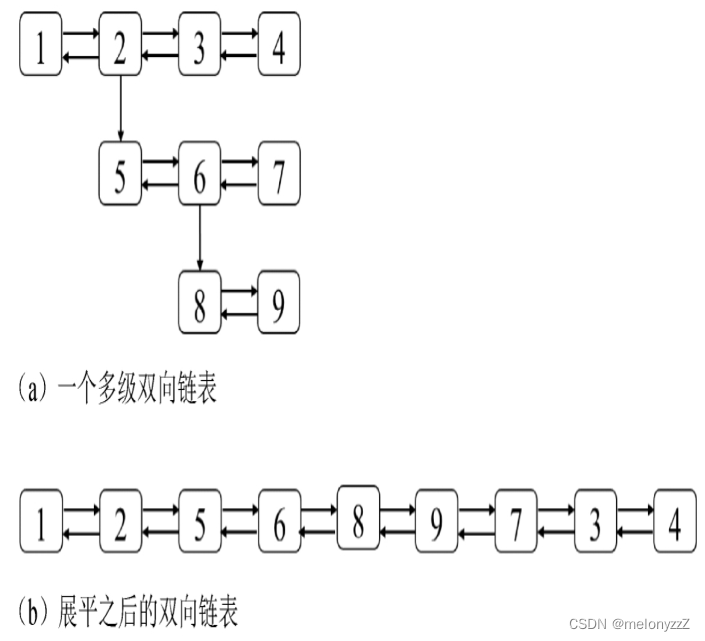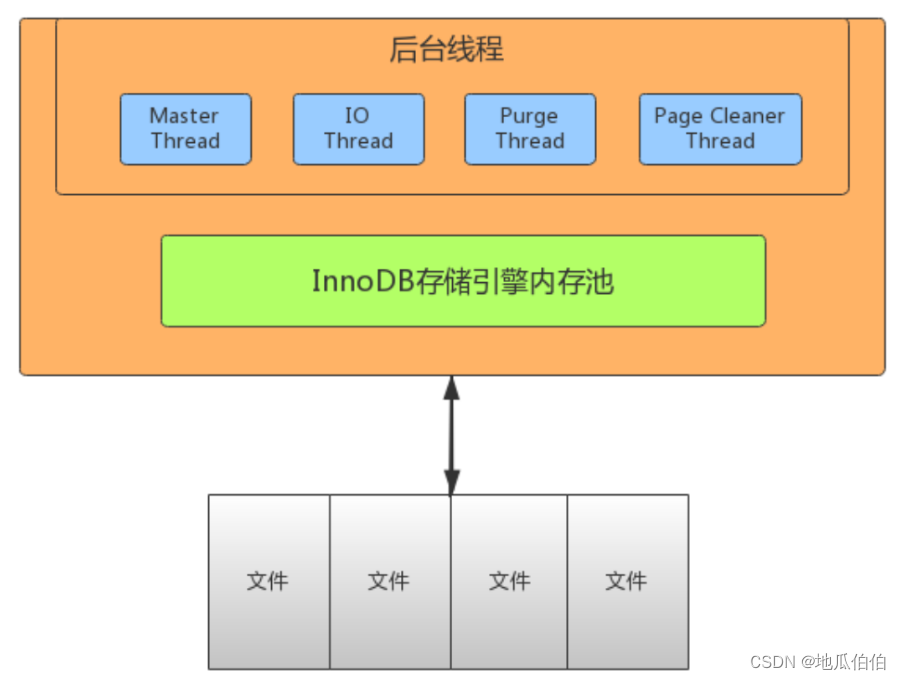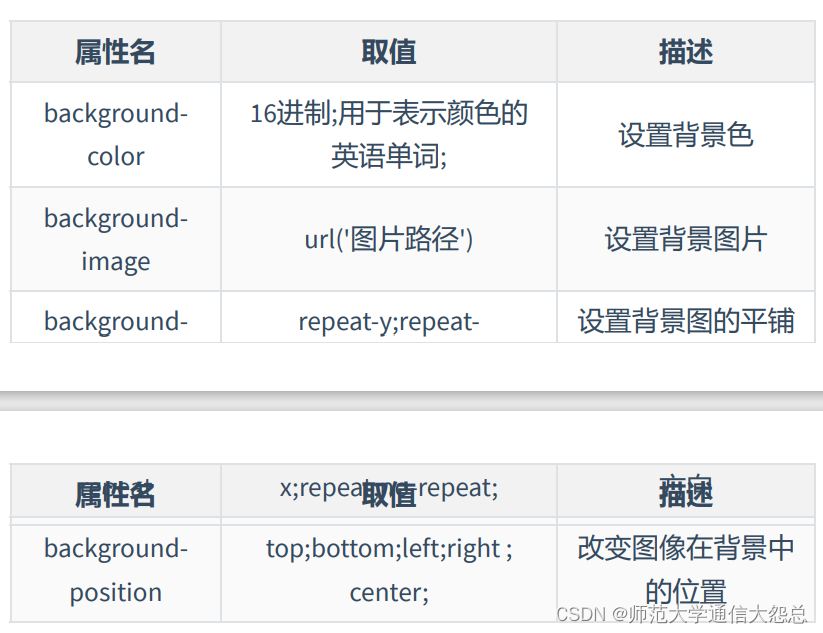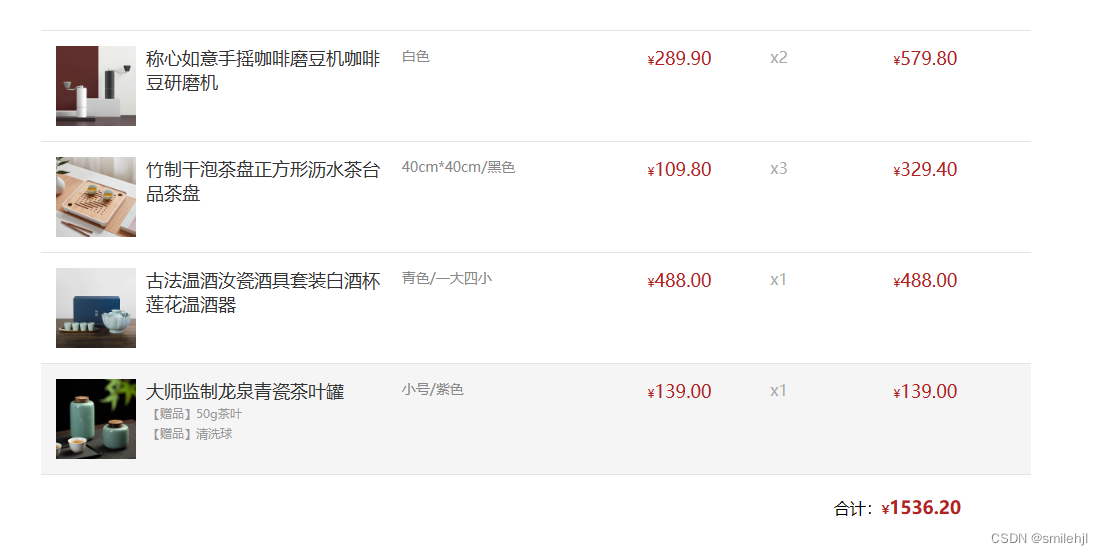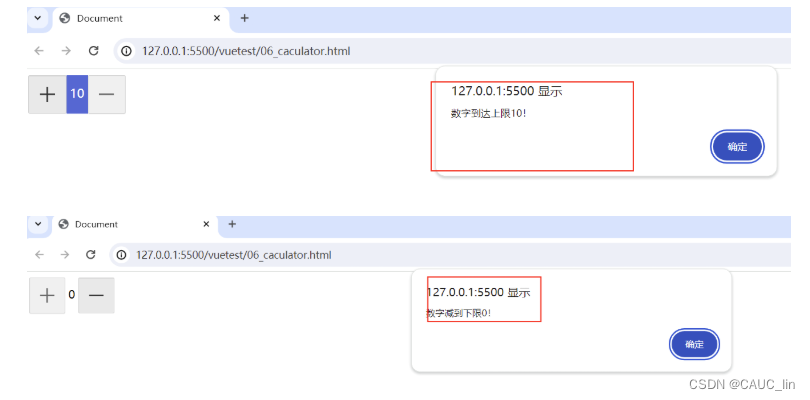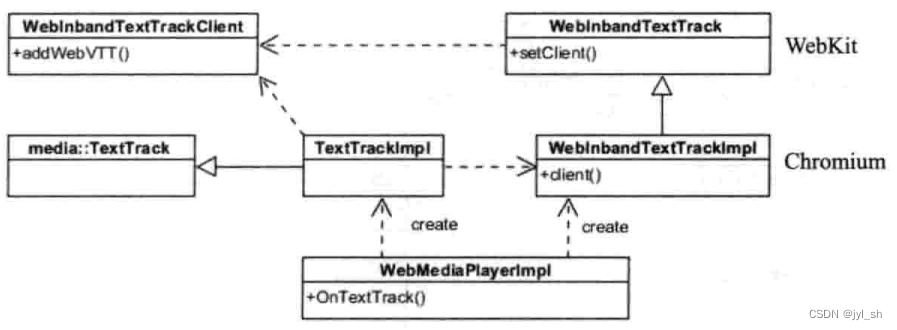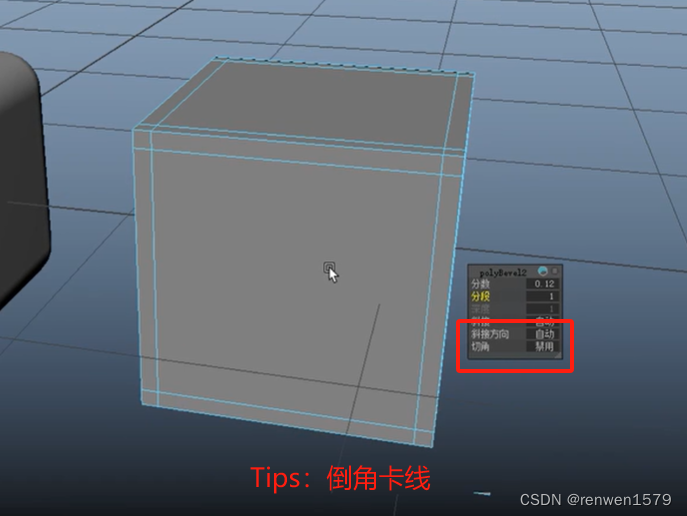哈希
- 哈希概念
- 哈希冲突
- 哈希函数
- 常见的哈希函数
- 哈希冲突的解决
- 闭散列
- 开散列
哈希概念
传统的查找函数,搜索的效率取决于比较的次数。而hash算法:在理想情况下,可以不经过任何比较,一次就能得到要搜索的结果。
存储结构:通过某种(hashFunc)使元素的存储位置与它的关键码之间能够建立一一映射的关系,所以在查找时,通过该映射函数可以很快找到该元素。
- 插入元素
根据待插入元素的关键字,以此函数计算出该元素的存储位置并按此位置进行存放。 - 搜索元素
对元素的关键码进行同样的计算,把求得的函数值当作元素的存储位置,在结构中按此位置取元素比较,若关键码相等,则搜索成功。
该方法就是哈希(散列)方法,哈希方法中使用的转换函数称为哈希(散列)函数,构造出来的结构称为哈希表。
大致结构如下图所示:

哈希冲突
不同的关键词通过相同的哈希函数映射到同一个地址,该现象叫做哈希冲突/哈希碰撞。
如:元素11再插入上图中,就会和元素1产生碰撞。
1和11就是同义词
哈希函数
引起哈希冲突的一个原因可能是:哈希函数设置不合理。
哈希函数设计原则:
- 哈希函数的定义域必须包括需要存储的全部关键码,而如果散列表允许有m个地址时,其值域必须在0到m-1之间
- 哈希函数计算出来的地址能均匀分布在整个空间中
- 哈希函数应比较简单
常见的哈希函数
-
直接定址法(常用)
取关键字的某个线性函数为散列地址:Hash(Key)= A*Key+B
优点:简单、均匀
缺点:需要事先知道关键字的分布情况
使用场景:适合查找比较小的连续的情况 -
除留余数法(常用)
设散列表中允许的地址数为m,取一个不大于m,但最接近或等于m的质数p作为除数,按照哈希函数:Hash(key) = key % p (p<=m),将关键码转成哈希地址 -
平方取中法
假设关键字是1234,对它的平方就是1522756,抽取中间3位227作为哈希地址;
再比如关键字4321,平方是18671041,抽取中间的三位671或者710作为哈希地址。
平方取中法适合:不知道关键字分布,而位数又不是很大的情况。 -
折叠法
折叠法是将关键字从左到右分割成位数相等的几部分(最后一部分位数可以短些),然后将这几部分叠加求和,并按散列表表长,取后几位作为散列地址。 -
随机数法
选择一个随机函数,去关键字的随机函数值为它的哈希地址,即H(key) = random(key),其中random为随机数函数。
通常应用于关键字不等时采用此法。 -
数学分析法

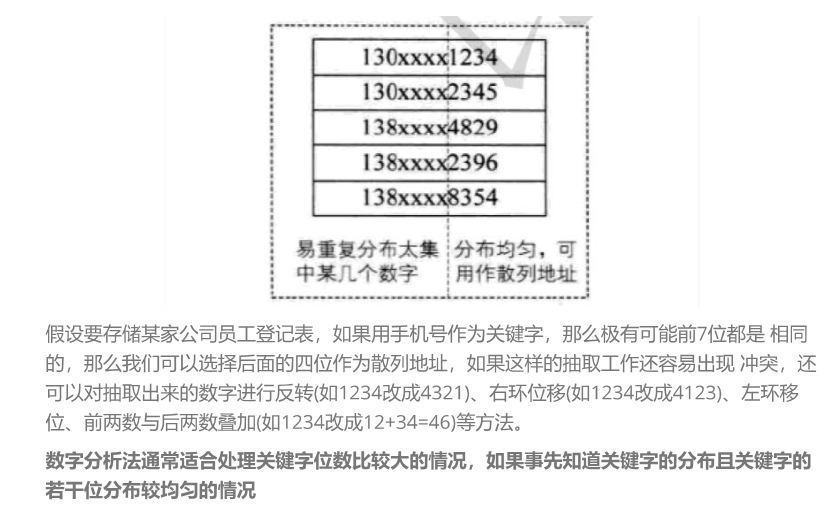
哈希冲突的解决
解决哈希冲突的两种常见方法是:闭散列和开散列。
闭散列
闭散列(开放定址法):当发生哈希冲突时,如果哈希表未被装满,说明在哈希表中必然还有一个空位置,那么可以把key存放到冲突位置中的“下一个”空位置中去。
- 线性探测:从发生冲突的位置开始,依次向后探测,直到寻找到下一个空位置为止。
- 闭散列处理冲突时,不能随便删除物理哈希表中已有的元素,若直接删除元素会影响其他元素的搜索。
闭散列线性探测实现:
enum class State
{
EMPTY,
EXIST,
DELETE
};
template<class K, class V>
struct Elem //数据类型
{
pair<K, V> _data;
State _state=State::EMPTY;
};
template<class K, class V>
class Hashtables
{
public:
bool insert(const pair<K, V>& data)
{
if (Find(data.first))
return false;
//如果不满足负载,就扩容
CheckSize();
//求地址
size_t hashi = data.first % _tables.size(); //不能是capacity,vector天然不支持
//插入
while(_tables[hashi]._state == State::EXIST)
{
hashi++; //线性探测法
hashi %= _tables.size();
}
_tables[hashi]._data = data;
_tables[hashi]._state = State::EXIST;
n++;
return true;
}
不方便删除接口
//pair<K, V>* Find(const K& key)
//{
// if (_tables.size() == 0)
// {
// return nullptr;
// }
// size_t hashi = key % _tables.size();
// size_t i = 1;
// while (_tables[hashi]._state==State::EXIST||_tables[hashi]._state==State::DELETE) //存在或删除,不影响探测
// {
// if (_tables[hashi]._state == State::EXIST
// && _tables[hashi]._data.first != key)
// {
// hashi = hashi + i;
// hashi %= _tables.size();
// i++;
// }
// else
// {
// return &_tables[hashi]._data;
// }
// if (hashi == key % _tables.size()) //转一圈也没找到
// {
// return nullptr;
// }
// }
//
// return nullptr;
//}
Elem<K,V>* Find(const K& key)
{
if (_tables.size() == 0)
{
return nullptr;
}
size_t hashi = key % _tables.size();
size_t i = 1;
//逻辑有问题
while (_tables[hashi]._state == State::EXIST || _tables[hashi]._state == State::DELETE) //存在或删除,不影响探测
{
if (_tables[hashi]._state == State::EXIST && _tables[hashi]._data.first == key)
{
return &_tables[hashi];
}
else //接着查找
{
hashi = hashi + i;
hashi %= _tables.size();
}
if (hashi == key % _tables.size()) //转一圈也没找到,说明全是存在+删除
{
return nullptr;
}
}
return nullptr;
}
bool erase(const K& key)
{
auto it = Find(key);
if (!it)
{
return false;
}
//错了!!!!!!!!!!!!!!!
//it._state == State::DELETE;
it->_state = State::DELETE;
n--; //别忘记计数减一
return true;
}
private:
void CheckSize()
{
if (_tables.size()==0 ||(double)n / (double)_tables.size() > 0.7)
{
int newcapacity = (_tables.size() == 0 ? 10 : _tables.size() * 2);
vector<Elem<K, V>> newTables(newcapacity);
//再次重新插入
for (auto& e : _tables)
{
if (e._state == State::EXIST)
{
size_t hashi = e._data.first % newTables.size();
while (newTables[hashi]._state == State::EXIST)
{
hashi++;
hashi %= newTables.size();
}
newTables[hashi]._data = e._data;
newTables[hashi]._state = State::EXIST;
}
}
swap(_tables, newTables);
}
}
private:
vector<Elem<K, V>> _tables; //哈希表
size_t n=0; //表示插入数据的大小
};
线性探测优点:实现简单
缺点:一旦发生冲突,所有冲突连在一起,容易产生“堆积”数据。
也可以用二次探测解决即:线性探测由hashi = hashi+i -> hashi + i^2。
研究表明:当表长为质数且装载因子a不超过0.5时,新的表项一定能够插入,而且任何一个位置都不会被探查两次。因此只要表中有一半的空位置,就不会存在装满的问题。在搜索时可以不考虑表装满的情况,但在插入时必须确保表的装填因子不超过0.5,如果超了,必须考虑增容。
因此闭散列最大的缺陷:空间利用率低,这也是哈希的缺陷。
开散列
开散列又叫链地址法,首先对关键码集合用散列函数计算散列地址,具有相同地址的关键码归于同一子集合,每一个子集合称为一个桶,各个桶中的元素通过一个单链表链接起来,各个链表的第一个结点存在哈希表中。
namespace HashBucket
{
template<class K, class V>
struct Elem
{
Elem(const pair<K, V>& data)
:_data(data)
,_next(nullptr)
{}
pair<K, V> _data;
Elem<K, V> *_next;
};
template<class K, class V>
class HashTables
{
typedef Elem<K, V> Node;
typedef pair<K, V> Data;
//typedef HashTables<K, V> HashTables;
public:
bool insert(const Data& data)
{
//负载因子过大就扩容
CheckCapacity();
//散列地址
size_t hashi = data.first % _tables.size();
//直接插入头插
Node* newNode = new Node(data);
newNode->_next = _tables[hashi];
_tables[hashi] = newNode;
n++;
return true;
}
Node* find(const K& key)
{
size_t hashi = key % _tables.size();
Node* cur = _tables[hashi];
while (cur)
{
if (cur->_data.first == key)
{
return cur;
}
cur = cur->_next;
}
return nullptr;
}
bool erase(const K& key)
{
size_t hashi = key % _tables.size();
Node* cur = _tables[hashi];
Node* prev = nullptr;
while (cur)
{
if (cur->_data.first == key)
{
if (!prev) //prev为空,说明是在表上
{
_tables[hashi] = cur->_next;
}
else
{
prev->_next = cur->_next;
}
delete cur;
return true;
}
prev = cur;
cur = cur->_next;
}
return false;
}
private:
//扩容有问题,不应该插入一个就扩容,插入一个就扩容!!!!!!!!!!!!
void CheckCapacity()
{
//表为空或者负载因子大于0.7了就扩容
//if (!_tables.size() || ((n * 10) / (_tables.size() * 10) > 7))
/*if (!_tables.size() || ((n * 10) / _tables.size() > 7))*/
if(n==_tables.size())
{
size_t newCapacity = (_tables.size() == 0 ? 10 : _tables.size() * 2);
HashTables* newHashTable = new HashTables;
newHashTable->_tables.resize(newCapacity);
//将旧表的数据重新映射到新表
//遍历旧表
for (auto& e : _tables)
{
if (e) //不空,就有数据
{
Node* cur = e;
Node* next; //下一个指针
while (cur)
{
size_t hashi = cur->_data.first % newCapacity;
next = cur->_next; //暂存下一个
cur->_next = newHashTable->_tables[hashi];
newHashTable->_tables[hashi] = cur; //头插
//newHashTable->n++;
cur = next;
}
}
}
//swap(*newHashTable, *this);
_tables.swap(newHashTable->_tables);
}
}
private:
vector<Node*> _tables;
size_t n = 0;
};
}
哈希桶的增容问题:




